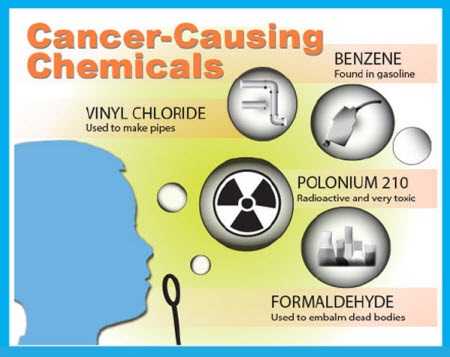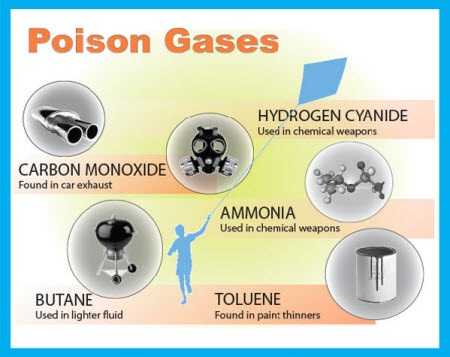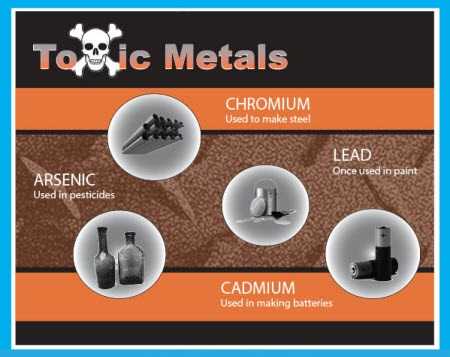Children in the Home
Tobacco smoke contains a deadly mix of more than 7,000 chemicals.
Hundreds are toxic. About 70 can cause cancer.
- Tobacco smoke hurts babies and children.1,2
- Children who are exposed to secondhand tobacco smoke breathe the same dangerous chemicals that smokers inhale.2
- The main place where young children are exposed to secondhand smoke is at home.1,3
- Smoke-free home and vehicle rules help protect children and adults.2,3
Children and Secondhand Smoke Exposure
- The home is the place where children are most exposed to secondhand smoke, and it’s a major place for secondhand smoke exposure for adults.1,3
- Children who live in homes where smoking is allowed have higher levels of cotinine (a biological marker of secondhand smoke exposure) than children who live in homes where smoking is not allowed.3
- Although secondhand smoke exposure among children has fallen over the past 15 years, children are still more heavily exposed to secondhand smoke than adults.3,4
- About 4 out of 10 U.S. children aged 3–11 years (40.6%) are exposed to secondhand smoke.4
- In the U.S., the percentage of children and teens living with at least one smoker is about three times the percentage of nonsmoking adults who live with a smoker.3
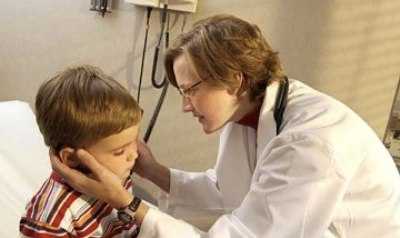
Making your home and vehicles smoke free can reduce secondhand smoke exposure among children and nonsmoking adults.1,2,3,4 Some studies indicate that these rules can also help smokers quit and can reduce adolescents’ risk of becoming smokers.5
Health Effects of Smoking and Secondhand Smoke on Children
- Because their bodies are developing, infants and young children are especially vulnerable to the poisons in secondhand smoke.1
- Both babies whose mothers smoke while pregnant and babies who are exposed to secondhand smoke after birth are more likely to die from sudden infant death syndrome (SIDS) than babies who are not exposed to cigarette smoke.1,2
- Mothers who are exposed to secondhand smoke while pregnant are more likely to have lower birth weight babies, which makes babies weaker and increases the risk for many health problems.1
- Babies whose mothers smoke while pregnant or who are exposed to secondhand smoke after birth have weaker lungs than other babies, which increases the risk for many health problems.1,2
- Secondhand smoke exposure causes acute lower respiratory infections such as bronchitis and pneumonia in infants and young children.1,2
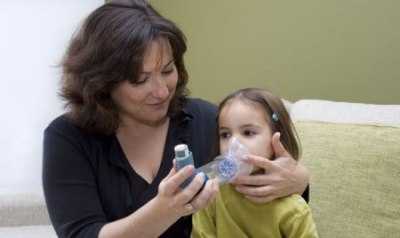
- Secondhand smoke exposure causes children who already have asthma to experience more frequent and severe attacks.1,2
- Secondhand smoke exposure causes respiratory symptoms, including cough, phlegm, wheezing, and breathlessness, among school-aged children.1,2
- Children exposed to secondhand smoke are at increased risk for ear infections and are more likely to need an operation to insert ear tubes for drainage.1,2
Quit Tips
Are you one of the more than 70% of smokers who want to quit? Then try following this advice.
1. Don’t smoke any cigarettes. Each cigarette you smoke damages your lungs, your blood vessels, and cells throughout your body. Even occasional smoking is harmful.
2. Write down why you want to quit. Do you want to—
- Be around for your loved ones?
- Have better health?
- Set a good example for your children?
- Protect your family from breathing other people’s smoke?
Really wanting to quit smoking is very important to how much success you will have in quitting.
3. Know that it will take commitment and effort to quit smoking. Nearly all smokers have some feelings of nicotine withdrawal when they try to quit. Nicotine is addictive.a Knowing this will help you deal with withdrawal symptoms that can occur, such as bad moods and really wanting to smoke.
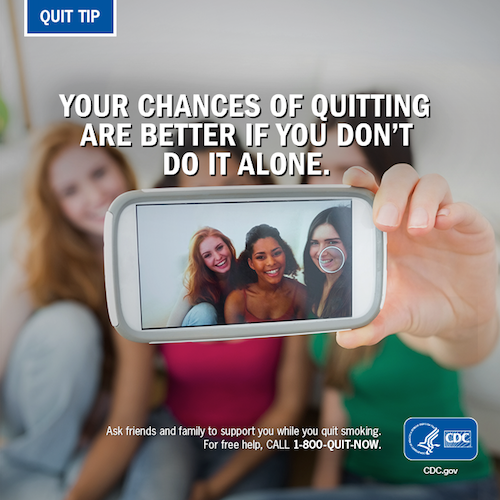
There are many ways smokers quit, including using nicotine replacement products (gum and patches) or FDA-approved, non-nicotine cessation medications. Some people do not experience any withdrawal symptoms. For most people, symptoms only last a few days to a couple of weeks.a Take quitting one day at a time, even one minute at a time—whatever you need to succeed.
4. Get help if you want it. Smokers can receive free resources and assistance to help them quit by calling the 1-800-QUIT-NOW quitline (1-800-784-8669) or by visiting CDC’s Tips From Former Smokers®. Your health care providers are also a good source for help and support.
Concerned about weight gain? It’s a common concern, but not everyone gains weight when they stop smoking.b Learn ways to help you control your weight as you quit smoking.
5. Remember this good news! More than half of all adult smokers have quit, and you can, too.c Millions of people have learned to face life without a cigarette. Quitting smoking is the single most important step you can take to protect your health and the health of your family.
Sources:
a. National Cancer Institute. How To Handle Withdrawal Symptoms and Triggers When You Decide To Quit Smoking. October 2010 [accessed 2013 June 5].
b. National Institutes of Health. You Can Control Your Weight as You Quit Smoking. February 2010 [accessed 2013 June 5].
c. Centers for Disease Control and Prevention. Quitting Smoking Among Adults—United States, 2001–2010. Morbidity and Mortality Weekly Report [serial online] 2011;60(44):1513–9 [accessed 2013 June 5].
Quit Smoking Resources
Government Resources
-
Tips From Former Smokers®
This CDC campaign Web site lets you view the ads, learn more about the people featured and their health conditions, and access quit-smoking resources. -
1-800-QUIT-NOW
A free, phone-based service with educational materials, coaches, a quit plan, and referrals to local resources to help you quit tobacco use. -
1-855-DÉJELO-YA (1-855-335-3569)
A free, phone-based service to help Spanish speaking persons quit tobacco use. . -
BeTobaccoFree.gov
This HHS Web site provides one-stop access to tobacco-related information, including information on quitting tobacco use, from its various agencies. -
smokefree.gov
A Web site that provides free, accurate information and assistance to help you quit smoking and stay tobacco-free. -
smokefree.gov (en Español)
A Spanish-language Web site that provides free, accurate information and assistance to help you quit smoking and stay tobacco-free. -
SmokefreeWomen
A Web site that provides free, accurate information and assistance to help women quit smoking and stay tobacco-free. -
SfT (Smokefree Teen)
A Web site that provides free, accurate information and assistance to help teens quit smoking and stay tobacco-free. -
SmokefreeTXT
A mobile service that provides encouragement, advice, and tips to help young adults quit smoking. -
Smokefree Smartphone Apps
Smokefree smartphone applications that help you track your quit smoking progress, receive motivational reminders, and more. -
Quit Tobacco—Make Everyone Proud
A DoD-sponsored Web site for military personnel and their families. -
Help for Smokers and Other Tobacco Users
An easy-to-read guide to quitting tobacco use. -
Treating Tobacco Use and Dependence: 2008 Update—Overview
Consumer materials to help tobacco users become tobacco-free. -
FDA 101: Smoking Cessation Products
Identifies FDA-approved products that can help you quit smoking. -
Harms of Smoking and Benefits of Quitting
A fact sheet from the National Cancer Institute that summarizes the harmful effects of smoking and short- and long-term benefits of quitting.
Other Resources
-
American Cancer Society
Guide to quitting smoking. -
American Heart Association
Information and support to help you quit smoking. -
American Lung Association
Resources to help smokers figure out their reasons for quitting and then take the big step of quitting for good.
References
- U.S. Department of Health and Human Services. The Health Consequences of Involuntary Exposure to Tobacco Smoke: A Report of the Surgeon General: Secondhand Smoke: What It Means To You. Atlanta: U.S. Department of Health and Human Services, Centers for Disease Control and Prevention, National Center for Chronic Disease Prevention and Health Promotion, Office on Smoking and Health, 2006 [accessed 2015 Feb 6].
- U.S. Department of Health and Human Services. A Report of the Surgeon General: How Tobacco Smoke Causes Disease: What It Means to You. Atlanta: U.S. Department of Health and Human Services, Centers for Disease Control and Prevention, National Center for Chronic Disease Prevention and Health Promotion, Office on Smoking and Health, 2010 [accessed 2015 Feb 6].
- Centers for Disease Control and Prevention. Vital Signs: Nonsmokers' Exposure to Secondhand Smoke—United States, 1999–2008. Morbidity and Mortality Weekly Report 2010;59(35):1141–6 [accessed 2015 Feb 6].
- Centers for Disease Control and Prevention. Vital Signs: Disparities in Nonsmokers’ Exposure to Secondhand Smoke—United States, 1999–2012. Morbidity and Mortality Weekly Report 2015;64(4):103–8 [accessed 2015 Feb 6].
- U.S. Department of Health and Human Services. The Health Consequences of Involuntary Exposure to Tobacco Smoke: A Report of the Surgeon General. Atlanta: U.S. Department of Health and Human Services, Centers for Disease Control and Prevention, National Center for Chronic Disease Prevention and Health Promotion, Office on Smoking and Health, 2006 [accessed 2015 Feb 6].
- Page last reviewed: June 12, 2017
- Page last updated: June 30, 2017
- Content source:


 ShareCompartir
ShareCompartir
